Launched in 1967 by the renowned manufacturer, Cadbury, Aztec bars entered the chocolate bar arena with a promise of a unique taste. Drawing parallels with the famed Mars Bar but with a distinct identity, Aztec bars quickly found a place in the hearts of chocolate aficionados. As we unwrap the story of Aztec bars, we delve into a narrative rich with sweet endeavours, competitive spirits, and a nostalgic legacy that continues to linger.
The Tale Behind The Name: Aztec Bar
The name of a product is often a window into its identity, embodying its essence and sometimes, the vision of its creators. The naming of the Aztec bar, though not explicitly documented, can be speculated upon based on the era of its birth and the imagery the name invokes.
Introduced in the late 1960s, a time of exploration and cultural fascination, the name 'Aztec' might have been chosen to evoke a sense of mystery, adventure, and exoticism. The Aztec civilization, known for its rich and enigmatic history, could have served as an alluring backdrop to position the chocolate bar as an exotic treat amidst a market of conventional offerings.
The name 'Aztec' exudes an aura of ancient richness and exotic allure, potentially providing a marketing edge in a competitive confectionery landscape. It's a name that transcends the ordinary, offering a whiff of an ancient civilization known for its grandeur and mystique.
Additionally, the period saw a surge in the popularity of historical and exotic themes in various facets of popular culture, from fashion to film. Naming a chocolate bar 'Aztec' could have been an attempt to ride this wave of fascination with the exotic and the historical, providing a narrative that distinguished it from its competitors.
Moreover, the name could have been a clever marketing tactic to imbue the brand with a unique personality that resonated with the adventurous and the curious. Every bite of the Aztec bar could have been envisioned as a sweet journey into a realm of exotic taste, a small adventure wrapped in chocolate.
In a market where standing out was key to capturing the hearts (and taste buds) of consumers, the name 'Aztec' was not merely a label, but a narrative, a promise of a sweet escape into a world of exotic delight. Through this name, the Aztec bar promised more than just a sweet treat; it offered a bite of adventure, a taste of the exotic, and a hint of mystery, wrapped in a rich chocolate enigma.
I had thought the name was linked to the 1970s football World Cup in Mexico but apparently there's no evidence of that!
The Rise of Aztec Bars
In a bid to carve a niche in a market dominated by established names, Cadbury introduced the Aztec bar, positioning it as a formidable rival to the Mars Bar.
The marketing strategies employed were nothing short of brilliant. The pricing was competitive, and the advertising campaigns, including cinema adverts, played a pivotal role in etching the brand into the public consciousness. The tagline "a feast of a bar" encapsulated the essence of the Aztec bar, promising a fulfilling sweet experience.
The appeal of Aztec bars wasn't confined to clever marketing; the taste, texture, and packaging were its real assets. A harmonious blend of nougat and caramel, generously enrobed in smooth milk chocolate, the Aztec bar was a simple yet delightful concoction. Its packaging was eye-catching, and the name 'Aztec' added an exotic allure, making it a standout choice among a sea of confectioneries. Consumers were enticed by the promise of a hearty, satisfying sweet treat, and Aztec bars delivered just that. Each bite was a foray into a sweet landscape that was both familiar and new.
As Aztec bars gained traction, they not only offered a taste adventure but also epitomized the competitive spirit of the era's confectionery scene. The battle for chocolate bar supremacy saw Aztec bars carving a sweet niche, one delightful bite at a time. Through effective marketing, quality product, and a keen understanding of consumer preferences, Aztec bars emerged as a sweet force to reckon with, creating ripples in the UK's confectionery market.
But...
The Downfall and Discontinuation
The sweet voyage of Aztec bars wasn't destined to last forever. The very competitive landscape that propelled its popularity also harboured challenges that proved insurmountable. The late 1970s saw a shift in confectionery preferences, and amidst a sea of choices, Aztec bars began to lose its sheen. The competition with other established brands like Mars Bar, coupled with evolving consumer tastes, cast a long shadow over the Aztec bar's once bright legacy.
By 1978, Cadbury decided to discontinue Aztec bars. The exact reason is unknown (by me anyway!) but I'd wager that the competition proved too fierce - the mega Mars bar machine was and is a formidable one. Whatever the underlying reasons, the discontinuation of Aztec bars left a sweet void that reminisced of a taste that was once a beloved part of the UK’s confectionery scene.
The abrupt end to the Aztec bar saga was a reflection of the transient nature of the confectionery market. In a realm where new flavours and brands continually vie for attention, holding onto a cherished spot can be a sweet yet fleeting victory. Aztec bars became a part of a narrative that many other confectioneries share - a bright start, a sweet journey, and an eventual fade into the pages of candy history.
A Sweet Rivalry: Aztec Bar vs Mars Bar
In the confectionery world, the rivalry between Aztec bars and Mars bars epitomizes a quest for sweet supremacy. Launched amidst a competitive market landscape, both bars aimed to captivate the taste buds of the sweet-loving populace. Though they shared a common space on the candy shelves, their unique attributes set them apart, cultivating a sweet rivalry that's remembered fondly.
Similarities:
Chocolate Enrobing: Both bars were sheathed in a layer of milk chocolate, creating a delightful exterior that enticed the chocolate aficionados. This commonality made them familiar choices among consumers.
Nougat and Caramel Core: The inner realm of both bars housed a sweet concoction of nougat and caramel, offering a chewy, stretchy delight with every bite. This core composition was a hallmark of their shared sweet appeal.
Sweet Indulgence: Marketed as hearty, satisfying indulgences, both bars promised a fulfilling sweet experience that aimed to satiate the candy cravings of their audience.
Differences:
Marketing Narrative: The Aztec bar, with its exotic name, hinted at a sweet adventure, whereas Mars bar was positioned as a hearty, satisfying sweet fix, creating different brand personas that appealed to varied consumer desires.
Legacy: Mars bars have endured through time, remaining a popular choice among candy lovers. On the other hand, Aztec bars, despite their initial popularity, faced discontinuation, leaving behind a nostalgic legacy cherished by those who had tasted its sweet allure.
Longevity: The continued presence of Mars bars in the market versus the relatively short-lived journey of Aztec bars highlights a difference in their market sustainability and consumer loyalty.
The rivalry between Aztec bars and Mars bars is a sweet narrative of competition, innovation, and the pursuit of a lasting sweet legacy. Each bar, with its unique brand narrative and flavour profile, contributed to the rich tapestry of the UK's confectionery history, leaving behind sweet memories that continue to resonate with candy enthusiasts.
The Brief Revival: Aztec 2000
As the new millennium dawned, nostalgia for cherished flavours of the past prompted Cadbury to revive the Aztec bar, albeit with a futuristic twist, christening it as Aztec 2000. The year 2000 saw the rebirth of the once-loved chocolate bar, evoking sweet memories for those who had relished it in the past.
However, the revival was short-lived. Aztec 2000 could not reignite the magic of its predecessor. Perhaps the taste buds had evolved, or the charm of the original Aztec was lost in translation to a new era. The public response was lukewarm, and Aztec 2000 found itself back in the annals of confectionery history soon after its relaunch. The attempt to rekindle an old flame was sweet but brief, reminiscent of a time when Aztec bars ruled the hearts of many.
The narrative of Aztec 2000 is a testament to the enduring love for the original Aztec bar, and the sweet, albeit transient, attempt to recapture a taste that had once defined an era. Through its brief comeback, Aztec 2000 reminded the world of a sweet legacy that continues to evoke a sense of nostalgia among the candy lovers of yesteryears.
A Sweet Farewell: Other Iconic British Sweets of Yesteryears
The confectionery landscape of Britain has always been rich and diverse, offering a myriad of sweet treats to delight the taste buds of candy lovers. However, as time marched on, some beloved sweets from the bygone era bid adieu to the sweet shelves, leaving behind a trail of nostalgic memories. Here's a tribute to some iconic British sweets from the Aztec bar era that have disappeared from the market:
Texan Bars: A chewy nougat centre draped in chocolate, Texan bars were a cowboy-themed sweet treat that promised a rugged, chewy adventure with every bite. Despite their popularity, they rode off into the sunset in the 1980s.
Spangles: These fruit-flavoured, square-shaped boiled sweets were a staple of British confectionery. With a variety of flavours to choose from, Spangles were a sweet companion to many, until they ceased production in the early 1980s.
Cabana Bars: With a unique blend of coconut, cherry, and caramel encased in milk chocolate, Cabana bars offered a tropical escape in every bite. However, they sailed away from the market in the late 1980s.
Fry’s Five Centres: A delightful assortment of five different flavoured fondant centres – orange, raspberry, lime, strawberry, and pineapple – each enveloped in dark chocolate, Fry's Five Centres ceased to enthrall the sweet aficionados in the 1990s.
Old Jamaica Bars: A fusion of dark chocolate and rum-flavoured raisins, Old Jamaica bars were a sweet voyage to a tropical paradise. Although they disappeared for a while, they made a brief comeback due to popular demand.
Opal Fruits: Though not entirely vanished, Opal Fruits rebranded as Starburst in 1998, taking along with the name change, a slice of nostalgia associated with the original brand.
Toffo: A chewy toffee delight that came in an array of flavours, Toffo sweetened the days of many until it was discontinued in the early 2000s.
Bar Six: A handy snack-sized chocolate bar segmented into six pieces, Bar Six was a sweet companion for many, till it faded away into the annals of candy history.
These sweets, each with its unique taste and character, were more than just confectioneries. They were sweet fragments of history, echoing the tastes and preferences of a bygone era, leaving behind a legacy of sweet nostalgia that continues to resonate with those who had the chance to relish them.
Conclusion
The journey of Aztec bars from its inception to discontinuation, and a brief yet evocative revival, is a sweet chapter in the UK's candy history. It's a story of sweet ambitions, competitive endeavours, and the simple joy that comes with a delightful blend of nougat, caramel, and chocolate. The Aztec bar may have had a short shelf life, but its memory continues to linger, a sweet echo from the past that still manages to bring a smile to many faces.
The tale of Aztec bars is a reminder of the transient yet impactful journey of confectioneries. It's a narrative filled with sweet memories, a testament to the everlasting bond between taste and memory. As we reminisce about the Aztec bar, we also celebrate the sweet essence of nostalgia, cherishing the delightful moments etched in our memories, one sweet bite at a time.
The story of Aztec bars is a sweet ode to the past, a narrative that continues to resonate through the corridors of time, evoking a sense of sweet nostalgia with every reminiscent thought.



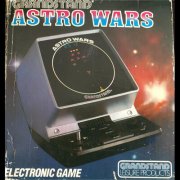
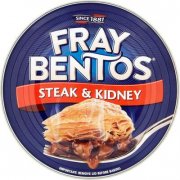







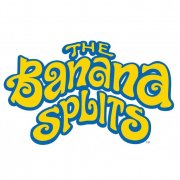





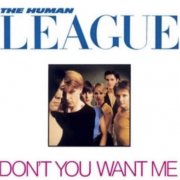




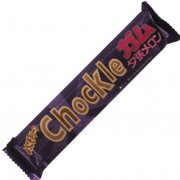



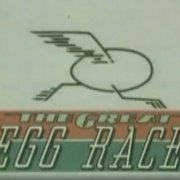







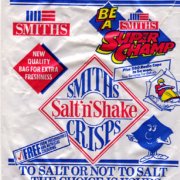











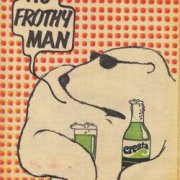

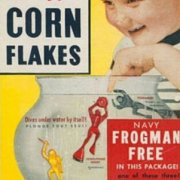



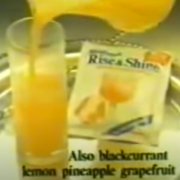


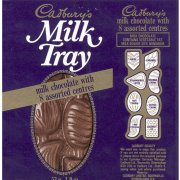





Enter the code in the box below: